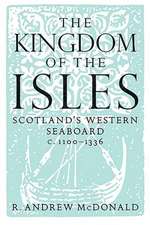The International Numismata Orientalia
Autor Barclay V. Headen Limba Engleză Paperback – 26 oct 2008
| Toate formatele și edițiile | Preț | Express |
|---|---|---|
| Paperback (2) | 76.53 lei 38-44 zile | |
| Hansebooks – 7 dec 2020 | 76.53 lei 38-44 zile | |
| Camp Press – 26 oct 2008 | 80.70 lei 6-8 săpt. |
Preț: 80.70 lei
Nou
Puncte Express: 121
Preț estimativ în valută:
15.44€ • 16.12$ • 12.75£
15.44€ • 16.12$ • 12.75£
Carte tipărită la comandă
Livrare economică 15-29 aprilie
Preluare comenzi: 021 569.72.76
Specificații
ISBN-13: 9781443774390
ISBN-10: 1443774391
Pagini: 68
Dimensiuni: 140 x 216 x 4 mm
Greutate: 0.1 kg
Editura: Camp Press
ISBN-10: 1443774391
Pagini: 68
Dimensiuni: 140 x 216 x 4 mm
Greutate: 0.1 kg
Editura: Camp Press













